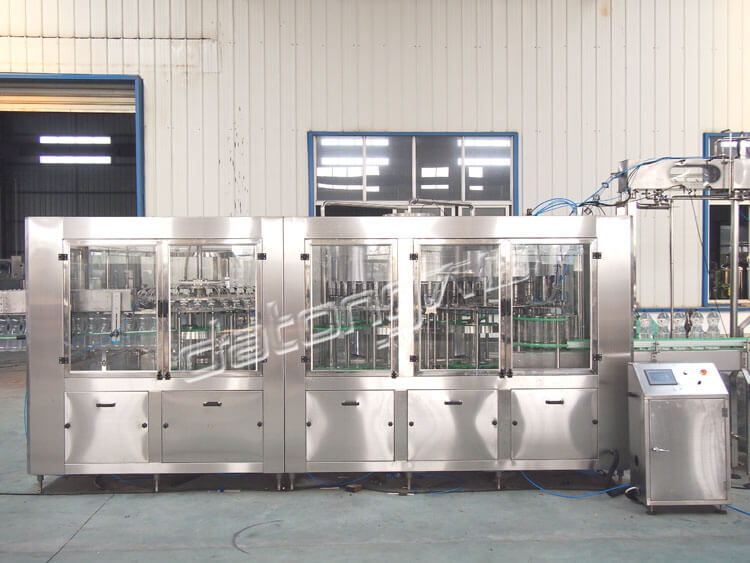The water filling machine processes
Views: 523
Author: Site Editor
Publish Time: 2020-08-10
Origin: Site
Over the years the consumption of bottled water has grown considerably in the world. Now, medium and small companies are increasingly venturing into this type of bottled water business, as over time the bottled water business become increasingly profitable.

Even water purification technology has evolved to the point that setting up a water purifying and bottling plant is becoming more and more economical, in addition to having the assurance of producing quality purified water.
This is mainly because our society is more aware of their health care, and they have opted for the consumption of bottled water that is more natural, instead of conventional sugary drinks.
Processes for the Implementation of a Table Water Bottling Plant
For the implementation of a table water purifying and bottling plant, a complete system consisting of the water filling machine, is required that covers the filtration, purification and disinfection of water.
Initially, the unpurified water goes through a filtration system, with the aim of removing the suspended solids in it, reducing the hardness, eliminating excess chlorine and improving the taste of the water. Filtration systems include:
Multimedia filters:
Multimedia filters are designed to extract the suspended solids in the water by means of several layers of filter media of different sizes and to obtain cleaner water. It is the first stage in the purification and treatment of drinking water. More information
Activated carbon filters:
Activated carbon filters allow the elimination of organic and inorganic compounds present in drinking water, especially chlorine that damages reverse osmosis membranes. The removal of these components helps to considerably improve the taste and smell of table water. More information
Water softeners:
The water softening equipment allows to remove the calcium and magnesium salts present in the water by means of ion exchange, these salts could cause scale in the pipes and mainly in the reverse osmosis membranes, reducing their efficiency. This process is used to reduce the hardness of the water in the purification process. More information
Reverse osmosis system.
This is the most important stage in a table water purification plant, it is the most effective and safe water purification process that allows to eliminate up to 99.5% of dissolved salts in the water and thus obtain a product with low salt content.
Then the purified water goes through a disinfection treatment with ozone and ultraviolet light to ensure the total destruction of microorganisms and we make sure that the water is suitable for human consumption.
Storage of treated water.
The already purified water is stored in a completely hermetic tank, to avoid contact with contaminants; Depending on the location of the tank, if it is at a certain height, it can reach the drum filling line by gravity or by the impulse of a small pump.
Water filling machine processes
Bottle washing:
Washing is carried out manually or in automatic washing machines, which are divided into two sections, one for washing and the other for rinsing.
For washing, a 2% caustic soda solution (preferred in automatic washing machines) is used, which is injected under pressure through the mouth of the inverted jug, or common detergents (for traditional manual washing).
For rinsing, the second section of the washing machine is used, where the valves that inject treated water to completely remove the soda or used detergent, always take into account rinsing several times, to completely remove the detergent. The clean jugs are passed to the filling section.
FILLING, COVERING AND LABELING:
It is carried out by means of a filling machine, the bottle is poorly placed on a table under the valves, it is filled and then it is taken to another table outside the filling area, where it is covered with plastic caps previously disinfected in chlorinated solution. ; It is subsequently labeled and transferred to the warehouse.
The production of bottled water continues to grow each year to a double-digit rhyme, surpassing the market for soft drinks and other beverages.




